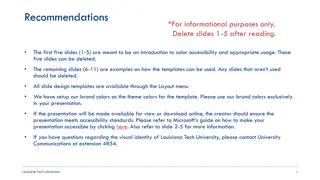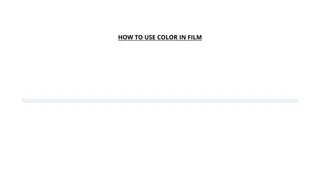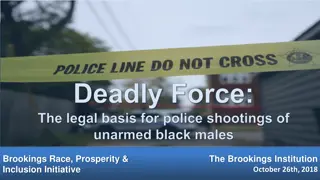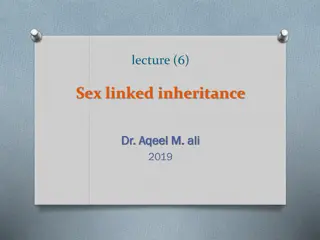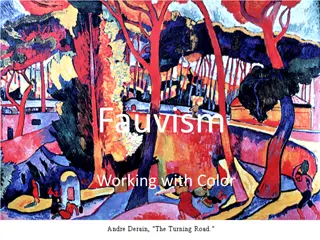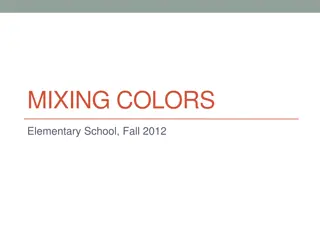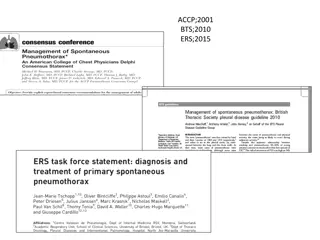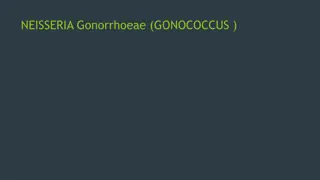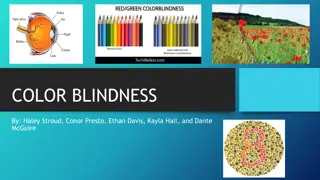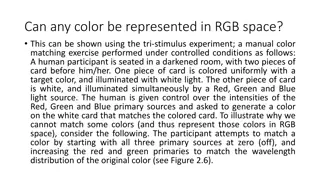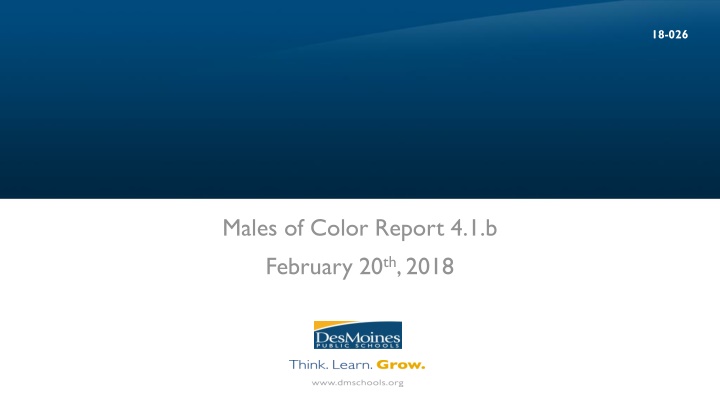
Empowering Males of Color in Education - Insights & Strategies
Gain valuable insights from the Males of Color Report highlighting academic growth, absenteeism challenges, and equity-driven data analysis in schools. Explore effective strategies to enhance learning, thriving, and belonging for these students.
Download Presentation

Please find below an Image/Link to download the presentation.
The content on the website is provided AS IS for your information and personal use only. It may not be sold, licensed, or shared on other websites without obtaining consent from the author. If you encounter any issues during the download, it is possible that the publisher has removed the file from their server.
You are allowed to download the files provided on this website for personal or commercial use, subject to the condition that they are used lawfully. All files are the property of their respective owners.
The content on the website is provided AS IS for your information and personal use only. It may not be sold, licensed, or shared on other websites without obtaining consent from the author.
E N D
Presentation Transcript
18-026 Males of Color Report 4.1.b February 20th, 2018
Introductions Jake Troja Director of School Climate Allyson Vukovich Director of Community in Schools Gilmara Vila Nova-Mitchell Heartland AEA Equity Consultant Jason Allen Director of Activities and Community Education Jaynette Rittman Principal Edmunds Elementary Slide #2
Outline 1. Executive Summary 2. Response to Data Learning Thriving Belonging 3. School Example Edmunds 4. Questions Slide #3
Executive Summary Slide #4
Equity Plan Learning:Providing students with essential knowledge, skills, and abilities Thriving: Ensuring each student reaches their potential through enriching relationships Belonging: Working in partnership with our students, families, and community to create connections that increase student success. Slide #6
Executive Summary Data indicates academic accelerated growth for Males of Color in all schools and particularly significant growth in demonstration schools Chronic absenteeism for Males of Color was identified as area of focus Office of Academics and Office of Schools worked collaboratively to examine MoC student data using the district's equity driven data analysis tool Feedback was collected from students and external stakeholders (families and community partners) Slide #7
Absence Reason First Semester, FY 18 Males of Color High School Illness Medical Appointment/Injury OSS School Activity Excused by Parent Late / Leave Early Unexcused - No valid reason 9.00% 2.55% 0.86% 2.51% 1.74% 1.43% 81.91% Slide #8
Illness 9% Medical Appointment/Injury 3% MOC 8.23.17-1.17.18 OSS 1% School Activity 2% Excused by Parent 2% Late / Leave Early 1% Unexcused - No valid reason 82% Slide #9
Response to Data Slide #10
Overall Response to Data Continue to increase organizational capacity to support the equity effort at the district and building level Continue to align Schools for Rigor, equity and whole child health Continue to prioritize cultural proficiency/equity professional development for all school employees Continue to embed community, student, and family voice into decision making process Slide #11
Learning Slide #13
Learning Continued emphasis on the Schools for Rigor model. Demonstration Schools are showing accelerated growth for Black/African American males in both reading and math on the MAP assessment. Continued intensive literacy support for schools. The elementary schools receiving targeted early literacy support are showing a 12% increase in Black/African American males making growth on the MAP reading assessment Slide #14
Schools for Rigor: Reading Percent of Projected Growth Met on MAP (Fall to Winter) Elementary Schools 2016-17 2017-18 Gains Black/African American Males Schools for Rigor Demonstration Schools 58% 123% +65% Schools for Rigor Year 1 Implementation Schools 76% 97% +21% Other Schools 64% 92% +28% Hispanic/Latino Males Schools for Rigor Demonstration Schools 58% 134% +76% Schools for Rigor Year 1 Implementation Schools 84% 85% +1% Other Schools 76% 94% +18% Slide #15
Schools for Rigor: Math Percent of Projected Growth Met on MAP (Fall to Winter) Elementary Schools 2016-17 2017-18 Gains Black/African American Males Schools for Rigor Demonstration Schools 90% 127% +37% Schools for Rigor Year 1 Implementation Schools 79% 112% +33% Other Schools 83% 103% +20% Hispanic/Latino Males Schools for Rigor Demonstration Schools 92% 117% +25% Schools for Rigor Year 1 Implementation Schools 97% 102% +5% Other Schools 83% 105% +22% Slide #16
Schools for Rigor: FAST Percent of Students Meeting Benchmark Grades K-3 2016-17 2017-18 Gains/Losses Black/African American Males Schools for Rigor Demonstration Schools 45.88% 55.34% +9.46% Schools for Rigor Year 1 Implementation Schools 47.35% 43.46% -3.89% Other Schools 41.13% 37.30% -3.83% Slide #17
Intensive Literacy Support: Reading Percent of Projected Growth Met on MAP (Fall to Winter) 2016-17 2017-18 Gains Black/African American Males Intensive Support 73% 105% +32% Other Schools 65% 96% +31% Hispanic/Latino Males Intensive Support 62% 94% +32% Other Schools 81% 96% +15% Slide #18
Thriving Slide #19
Thriving A complete redesign of the Culture, Climate and Community team to develop and support a whole child health framework, anchored in student s physical, social, emotional and mental health Create a task force to design and implement K-12 Social, Emotional and Behavioral curriculum focused on the 5 CASEL competencies, which includes self-awareness (skills in mindfulness), self- management, responsible decision making, relationship skills, and Social Awareness Continue to improve and leverage community partners to help meet students needs Slide #20
Whole Child Health A newly established partnership with the Department of Human Services, Juvenile Court Services and Polk County Decategorization, allowed us to expand our focus on mental health supports in schools, adding the position of Behavioral Health Services Coordinator. Addition of new position has allowed DMPS to be part of the School Health Services National Quality Initiative through the Center for School Mental Health. Slide #21
Whole Child Health School Based Therapy partners with nine organizations supporting nearly every DMPS school buildings. We have issued two requests for proposals aligned with our behavioral health focus. Based on the results of this competitive bid process we will enter into an agreement with a mental health provider for a Student Assistance Program (SAP) to provide short-term counseling for students and an intensive in home service program to support families and deter involvement with the child welfare system. Trauma Informed work @ Scavo High School in partnership with Young Women s Resource Center supported by Mid-Iowa Health Foundation Slide #22
Partnerships 7,400 unique students are involved in community partner programs 70% are students of color 21% are ELL 84% of students are not chronically absent 90% have 0-1 referral and 83% have 0 referrals Slide #23
Partnerships Vision to Learn: Health Care Clinics FY17 Pilot in 6 Elementary Schools 312 individuals at Scavo 214 individuals at Hoover FY18 19 Elementary schools As of January, 2018 379 students screened, 296 received glasses Estimated 900 students will be screened Dental 190 Individuals Slide #24
Partnerships Food Pantries 10 School-Based Food Pantries 900 Families served monthly Food Bank of Iowa Slide #25
Belonging Slide #26
Belonging Continue to focus on increasing the accuracy of attendance data through the continuous improvement process (ongoing Kaizen), resulting in the development of data analysis tools, accountability structures, elimination of student information errors, and alignment of student support structures (MTSS) Continue to create high quality, differentiated and engaging extra-curricular activities, where Males of Color have disproportionately positive outcomes Slide #27
Secondary MoC Participation (Students Involved in one or more activity) All Males of Color 49 more students 26 more students Black/AA Males of Color 18 more students Hispanic/Latino Males of Color Slide #28
Secondary MoC Attendance Data (% of students who have less than 90% attendance) ALL MoC 23% of students involved have less than 90% attendance in comparison to 43% of students not involved. Difference: 20% Black/AA Males of Color 30% of students involved have less than 90% attendance in comparison to 51% of students not involved. Difference: 21% Hispanic/Latino Males of Color 22% of students involved have less than 90% attendance in comparison to 43% of students not involved. Difference: 21% Slide #29
Secondary MoC Attendance Data (Average Daily Attendance) ALL MoC MS 95% involved compared to 93% not involved HS 92% involved compared to 85% not involved 7% difference for HS Black/AA Males of Color MS 94% involved compared to 91% not involved HS 90% involved compared to 83% not involved 7% difference for HS Hispanic/Latino Males of Color MS 94% involved compared to 93% not involved HS 92% involved compared to 85% not involved 7% difference for HS Slide #30
Secondary MoC GPA Data (High School Only) ALL MoC GPA of HS students involved 2.62 in comparison to GPA of HS students not involved 2.07. Difference: .60 Black/AA Males of Color GPA of HS students involved 2.38 in comparison to GPA of HS students not involved 1.82. Difference: .56 Hispanic/Latino Males of Color GPA of HS students involved 2.68 in comparison to GPA of HS students not involved 2.06. Difference: .62 Slide #31
Brother 2 Brother Program OVERVIEW: This program strives to increase the number of males of color getting through middle school and graduating both high school and college to move on and positively impact their community. Brother 2 Brother consists of a matrix of responsibilities and activities surrounding academic achievement, personal development, professional growth, and service learning. Through leadership, mentoring, advocacy and action, B2B addresses educational barriers for male students of color, while fostering a spirit of care and empowering students to set higher standards of achievement. Brother 2 Brother embraces these four principles: Accountability Proactive Leadership Self-discipline Intellectual Development Slide #32
Brother 2 Brother Activities B2B program growth 2015-2016 2016-2017 2017-2018 Sisters 4 Success (S4S) program growth (Sister program) 2015-2016 40 students 2016-2017 87 students 49 students 177 students 220 students 4 chapters 10 chapters 12 chapters 3 chapters 6 chapters 2017-2018 326 students 15 chapters *Data Office Referrals and attendance will be pulled on March 15th to compare second semester to first semester. GPA comparisons to first semester will be pulled on June 1st to also include office referrals and attendance. Slide #33
Brother 2 Brother Activities Academic Achievement Study tables Tutoring College planning College visits Book study and review Professional Growth Greater Des Moines Young Men of Color Conference Des Moines Young Men of Color Conference (focus: Hispanic/Latino males) Job Shadowing Personal Development B2B Kick-Off @ Camp Dodge (leadership training, team building) BMW (Black Men Working) guest speakers STOMP Theatrical Play in partnership with the Civic Center Service Learning Meals from the Heartland Volunteering at school Feeding the homeless *Areas listed include both district and individual chapter activities Slide #34
EDMUNDS ELEMENTARY Jaynette Rittman, Principal Slide #35
EQUITY: LEARNING Schools for Rigor Create a classroom learning environment to prepare students for 21st Century new economy skills. Narrowed focus- Special Education and African American sub groups As a building increased Reading MAP scores for SPED by 82.23 (Projected growth) As a building increased Math MAP scores for SPED by 103.57 (Projected growth) As a building increased Reading MAP scores for AA by 107.01 (Projected growth) As a building increased Math MAP scores for AA by 115.71 (Projected growth) Slide #36
EQUITY: THRIVING (SCHOOL WIDE EXPECTATIONS) Culture the foundation upon which an organization is built; consisting of values, beliefs and norms that guide how people behave (respectful, responsible, caring) Climate the prevailing atmosphere of an organization; involving leadership, structures, rewards, and recognition (prone to more short term fluctuations) Contentthe knowledge and skills students need to learn in order to be successful Slide #37
EQUITY: THRIVING (SCHOOL WIDE EXPECTATIONS) Slide #38
EQUITY: THRIVING (MINDFULNESS) Challenges Stress and anxiety Chaotic culture = sensory overload Trauma Inability to self-regulate Solution I am learning to self-regulate my emotions to become a better citizen. Slide #39
EQUITY: THRIVING (WHOLE CHILD) Behavior Significant decrease in referrals Tiered interventions: CICO, social skills, individualized plans, leadership groups Attendance 97.4% of African American males regularly attend school 97.2% of all students regularly attend school Tiered interventions: attendance groups, personal phone calls, letters, & home visits from attendance team Mental Health Piloting Second Step with pre/post assessment to promote social emotional learning Slide #40
ENHANCING EQUITY IN SCHOOL DISCIPLINE: IDENTIFYING VULNERABLE DECISION POINTS 3rd grade referrals: Identified black/ African American subgroup Strategies: breakfast clubs, after-school programming with emphasis on project-based learning, incorporating student interests, yoga leaders Slide #41
EQUITY: BELONGING Parent and family Oakridge Blitz Attending student events outside the school day Family Night and Culture Fair (over 500 in attendance) Conferences: 100% connection Community TeamMates Simpson Connection Everybody Wins Drake football team Students Breakfast with the principal Meaningful leadership roles Student voice in school- wide expectations Teachers Teacher-led equity trainings Embedded equity within instructional practices Slide #42
EQUITY: BELONGING Increased Gallup 80% Hope 95% Engagement Strategies Counseling lessons on hope K-5 Administered in small groups Building-wide decision-making based on survey results Slide #43


